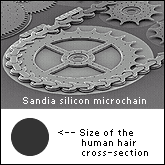The Journey of the Monarchs
 The life of Monarch butterflies is an amazing one. They develop as caterpillars from the roughly 400 eggs each mother lays on the underside of milkweed plant leaves. Then they spend their brief lives eating and gaining weight, sometimes reaching up to 2700 times their original weight. The caterpillars then pupate and transform into beautiful orange and black butterflies. This transformation from caterpillar to butterfly is not the most amazing thing that these creatures do.
The life of Monarch butterflies is an amazing one. They develop as caterpillars from the roughly 400 eggs each mother lays on the underside of milkweed plant leaves. Then they spend their brief lives eating and gaining weight, sometimes reaching up to 2700 times their original weight. The caterpillars then pupate and transform into beautiful orange and black butterflies. This transformation from caterpillar to butterfly is not the most amazing thing that these creatures do.
During the spring and summer months Monarch butterflies lead mostly solitary lives, flying here and there in the northern United States and southern Canada. However, once the fall approaches, they gather together in huge swarms and head south to avoid the cold winter. Their migration takes them as far south as Florida, Cuba and the Sierra Madre Mountains in Mexico. Monarchs cover these migration distances of as much as 2,000 miles (3,200 km) in only three to four weeks. Unlike most other butterflies, Monarchs do not flutter their wings when they fly. Instead, they flap their wings once or twice and then coast on the wind. They can travel long distances without frequent rest stops, sometimes reaching flying speeds of up to 30 miles per hour (48 km/h).
Monarchs' flight patterns are very predictable. It is believed that they navigate by the sun and orient themselves by landscapes, mountains and rivers. Once they arrive at their winter vacation spots, they congregate in several distinct areas, and, in a semi-dormant state, sometimes cover whole trees (as shown in the image). In January, they begin waking up, and in March they start heading back north again. Not a single Monarch that leaves the north in autumn lives long enough to return home, but up to five new generations of their offspring that emerge during any given summer, do. What amazing instinct then brings these young generations of Monarchs together in the fall for another journey south, via the same air corridors their parents once took? This remains a mystery.







